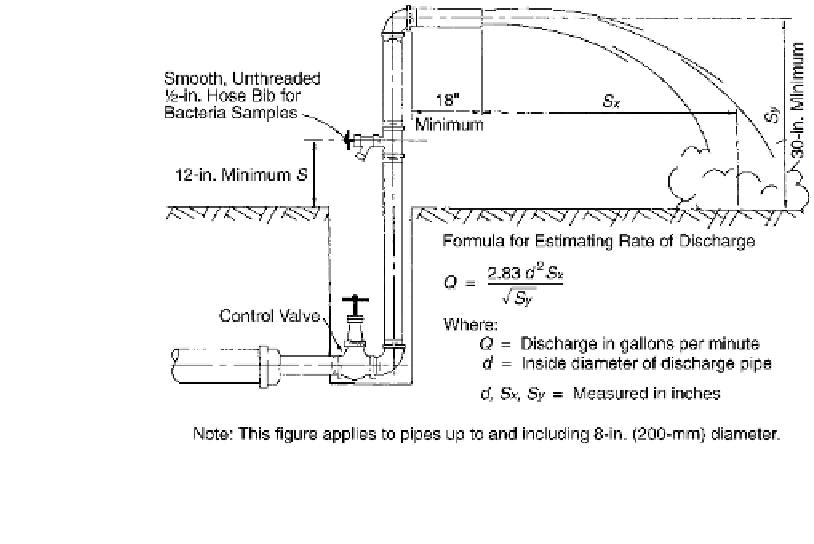Environmental Engineering Reference
In-Depth Information
Figure 3-3 Trajectory discharge method of flow estimation and illustration of
combination blowoff and sampling tap
this method for common size pipelines and other standard condi-
tions. Using this table, a flow can be easily estimated from field
measurements.
Large diameter pipelines may require excessive water to
flush adequately. In these cases, it may be necessary to employ
poly pigs or swabs (powerwashers and hydraulic jet sprayers are
sometimes used) to clean the pipe without using great volumes of
water (Figures 3-4, 3-5, 3-6).
If dirt enters the pipe, it should be removed by flushing the
pipe with potable water, and the interior surface of the pipe
swabbed with 1 to 5 percent chlorine solution (sodium or calcium
hypochlorite). Small quantities of 1 percent solution should be
prepared as shown in Table 3-4. If there is material adhering to
the interior of the pipe that cannot be flushed out, a more aggres-
sive cleaning may be necessary. Hydraulically propelled swabs,
poly pigs, or other suitable devices including mechanical scrapers
may be used to remove the attached material. This cleaning




































































Search WWH ::

Custom Search